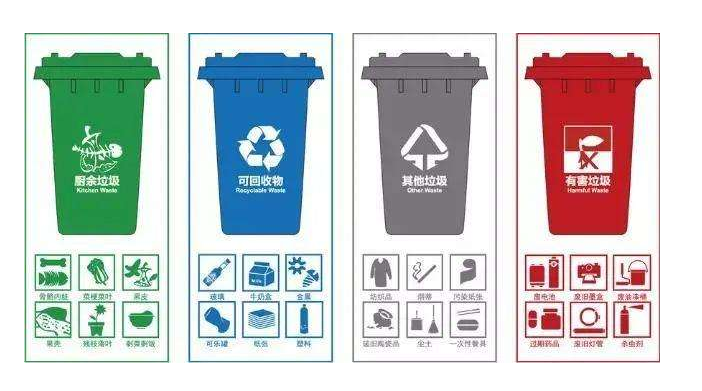Landfill leachate is a kind of organic wastewater with complex composition and high concentration. It mainly comes from the water contained in the landfill itself, the rain and snow water entering the landfill and other water. There are 63 kinds of organic pollutants. If not properly treated, it will cause serious pollution to groundwater, surface water, soil layer and surrounding environment, and harm the ecological environment and human health.
According to the environmental protection industry, since the country vigorously promoted garbage sorting in 2019, all parts of the country will form a three-year plan to implement garbage sorting at local level. After garbage classification, the water quality of leachate is bound to have a great impact. The landfill leachate, kitchen waste leachate and the leachate of garbage incineration power plant will have a great impact on the quantity and quality of the leachate. Relatively speaking, these two kinds of leachate have more cases and are relatively mature, which will be improved and adjusted on the original basis.
Because our country current imperfect they sort the garbage, waste water content reached more than 50% commonly, as a result, the landfill leachate produced general account for 35% of the amount of landfill - 50% (weight ratio), parts of the region, the influence of precipitation, etc, the output of the landfill leachate of landfill volume even can reach above 50%.

The leachate produced by China's waste incineration plants mainly comes from the water leached during the fermentation and ripening of fresh waste in the waste storage pit. At present, the leachate produced by waste incineration plants in China generally accounts for 25%-35% of the waste incineration volume (weight ratio), and more than 35% in some areas.
From 2011 to 2017, China's landfill leachate treatment capacity increased from 43.45 million tons to 65.35 million tons, with a compound growth rate of 7%.
The leachate treatment of kitchen waste after garbage classification has become a hot topic. After the distribution of garbage, the on-site disposal of kitchen waste (wet garbage) ushered in the "spring", and it is showing an outbreak trend at present. At the same time, one of the environmental problems limiting the promotion of the local treatment system is the standard discharge of the leachate (sewage).
To consider how to reach the standard of kitchen waste leachate (sewage), first to understand the composition of kitchen waste, from the water content of kitchen waste to analyze the amount and quality of the leachate (sewage), so as to design accordingly.
On July 17, 2020, the analysis of the composition and nature of terminal household waste in Guangzhou in 2019 was published on the official website of Guangzhou.
In 2019, according to analysis of guangzhou city living garbage physical (weight percentage) is as follows: kitchen waste class (mainly for perishable organic garbage) 8.66% 55.04% 23.03%, rubber and plastic, textile, paper, glass, MuZhu 2.22% 6.99% and 1.64%, mixed 0.93%, brick and tile ceramic, metal, 0.80% 0.68%, other 0.01% (among them, the "mixed type" refers to the particle size of less than 10 mm, a mixture of classification is difficult; "Other" refers to materials such as discarded batteries). The main properties of MSW are as follows: bulk density 266kg/m3, moisture content 54.54%, wet base low calorific value 6869kJ/kg.
Specifically, according to the analysis of relevant papers, the average moisture content of kitchen waste (kitchen waste) components is as high as 79.5%, and the main dry-based components are food waste and bone shellfish, with high total oil and rich nutrients. In the kitchen waste, solid waste accounts for 18%, waste oil accounts for 3%, and kitchen waste water accounts for 79%. Food solid waste mainly contains starch, crude protein and crude fat, accounting for 32%, 20% and 29% of the total weight respectively.
Classification according to the paper, "the Shanghai family after the physical and chemical properties analysis" kitchen waste, kitchen waste was carried out on the selected six streets and fully tested the physical and chemical properties, the test result shows that Shanghai kitchen waste moisture content is between 73% ~ 89%, C/N ratio between 14 to 20, fat content is between 0.7% ~ 2.1%, protein between 1.25% ~ 2.15%, the salt rate is between 0.09% ~ 0.29%, heavy metal content are lower than the limited contamination in food (GB2762-2012) limit standard.